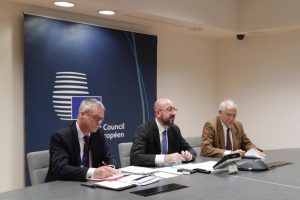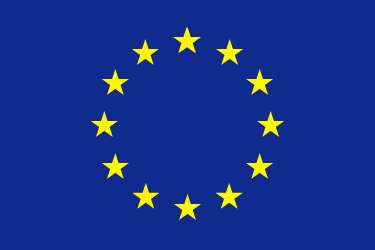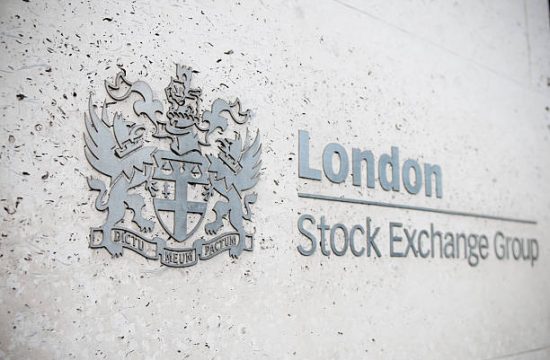
Summary: On Friday, European leaders are due to meet to discuss the recovery package “Next Generation EU” presented by the EC in addition to the standard seven-year budget for the period 2021-2027. There is still quite some way to go towards an agreement, notably regarding the balance between grants and loans and the criteria for allocating money. An agreement on the recovery plan in July, as expected by Chancellor Angela Merkel, is certainly a very optimistic scenario considering current divisions among member states.
Since the beginning of the outbreak, the EU has implemented radical measures by European standards to cope with the crisis:
- The three safety nets presented by the Eurogroup and endorsed by the EUCO worth €540bn for workers, businesses, and sovereigns have been endorsed and is operational since June 1. It includes the Commission’s unemployment reinsurance scheme (SURE) for €100bn, support to businesses via extra financing through EIB loans, up to €200bn, and the activation of the ESM with soft conditionality attached, capped at €240bn or 2% of member states’ GDP.
Contrary to the 2012 design, the new ESM credit line has many benefits such as lower total charge to countries (1% in the old version, versus 0.08% for 10 years or even -0,07% for 7 years in the new version). Initially, Cyprus was expected to be the first EU country to tap the ESM credit line, but it quickly backtracked. Similar discussions are currently going on at the parliamentary level in Italy, but activation of the ESM does not seem the top option of the governing coalition.
- The new and temporary “Next Generation EU” instrument for 2021-2024 worth €750bn that will be part of the talks on Friday along with the MFF for the period 2021-27. The first version of the recovery fund proposal by the EC includes €440bn grants, €60bn guarantees, and €250bn loans. The EU would borrow long-term at a very low rate due to the EU’s strong credit rating to finance this instrument. As an example, based on the EC plan, the following countries would receive grants reaching around €83bn for Italy, €77.3bn for Spain, €39bn for France and €22.5bn for Greece. This is not free money.
Access to the instrument would require countries to prepare a recovery plan as part of their National Reform Programmes that would be assessed in the European Semester process. The Commission, the EUCO, and the European Parliament would have total control over the allocation of the funds, though it is still unclear how it would exactly work. We only know that EU funds would be released in instalments depending on the progress made on the recovery plan. It is unclear at this stage whether recovery plans would include structural reforms, but it will certainly be part of the political bargaining between the Frugals and the rest of the EU.
- On top of these measures, the ECB has also unleashed new monetary stimulus measures as part of its quantitative easing programs, worth a total of €1.6tr.
Issues raised by the EC proposal
When the “Next Generation EU” instrument was first presented by the EC, many overly-optimistic commentators have talked about “Hamilton moment” for the EU. Digging into details, it looks more like a missed opportunity than a real leap forward in European integration. The two major limitations of the proposed scheme are the total amount allocated remains below what the dire economic situation would necessitate, at around 0.9% of EU GDP per year on the period 2021-2024, and it is very ill-timed. Due to the administrative processes, notably approval, the delay of disbursement is extremely long. Less than a quarter of total grants are expected to be spent in the next two and a half years with the peak of the stimulus happening in 2023-24, which is way too late for the recovery.
The EC will also have to provide clarifications about the exact criteria for allocating money (as mentioned previously). So far, it has only been stated that: “It will be available to all member states, but support will be concentrated in parts of the Union most affected and where resilience needs are greatest”. Finally, there is certainly a misunderstanding regarding the EC’s communication concerning new direct EU budget revenues (taxes) that will help the repayment of the EU borrowing for the recovery plan. Since the EU lacks tax sovereignty (Article 311 of the Treaty on the Functioning of the EU), we don’t see how it would be able to raise taxes to cover the cost of the Next Generation EU.
No breakthrough in negotiations this week
What is very surprising is that there is little communication from member states ahead of the meeting. This certainly means that negotiations behind closed doors continue on an intensive path at the ministry level and that no country wants to jeopardize them. In a way, it is rather a positive signal.
Over the past few weeks, slight divisions appeared between the Four Frugals with Denmark easing its opposition to the EC proposal and officially joining the “skeptical” camp, which includes Hungary. However, it will take quite a lot of time before reaching an agreement, and we believe that the soft July deadline mentioned by Chancellor Angela Merkel is unrealistic. We also need to remember that a long parliamentary process regarding Next Generation EU has started or is about to start in many member states that could significantly slow down the whole process. A few weeks ago, the Finnish Parliament’s constitutional committee, who was the first to examine the EC proposal, has ruled out it may not comply with the EU law – it is not a major roadblock that political will cannot overcome. Still, it is a “stone in the shoe” of the EC and supporters of the recovery package.













